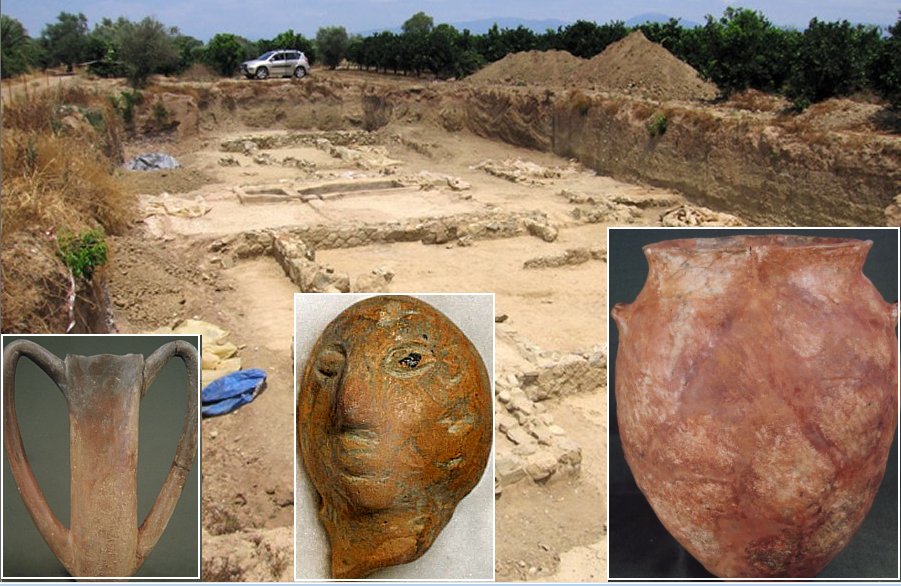A. Sutherland - AncientPages.com - Helice (Helike), an ancient city of Achaea, N Peloponnesus, long stood as a legendary lost metropolis. It was once located on the southern shore of the Gulf of Corinth, about 93 miles west of Athens.
Helike, which became the principal city of Achaea, was founded in the Mycenaean period by Ion, the leader of the Ionian race. Helike subsequently became the capital of the Twelve Cities of ancient Achaea.
The city was widely discussed in literature by many ancient Greek and Roman writers and visitors, such as Strabo, Pausanias, Diodorus, Aelian, and Ovid. It has been suggested by some scholars to be the inspiration for the story of Atlantis.
However, like legendary Atlantis, the actual whereabouts and evidence of Helike's remains have eluded scholars and explorers for 2,000 years.
According to ancient historical records, more than 2300 years ago, invading Achaeans, the neighbors of the Ionians, entered the Holy Temple of Poseidon in Helike. They had driven a group of people out of the temple and murdered them.
One day, a violent earthquake suddenly occurred; it shook the city of Helice, so it disappeared at night in the winter of 373 BC. This time, the great god Poseidon didn't protect his sacred city.
"The sea was raised by an earthquake, and it submerged Helike [in Akhaia], and also the temple of Poseidon Helikonios (of Helike)... the submersion took place by night in his time, and, although the city was twelve stadia [185 meters (607 feet)] distant from the sea, this whole district together with the city was hidden from sight," reported Strabo (63/64 BC- c. AD 24), a Greek historian, geographer, and philosopher.
Research indicates the city did not sink into the depths of the Corinthian Gulf, as previously believed", reported the researchers, "but was submerged by an inland lagoon, which later silted over." The excavations also uncovered a rich array of artifacts.
Through the years, several archaeological expeditions have searched the area for the ruins of the Helice - but in vain. For centuries after the city was destroyed, ancient writers reported that its submerged ruins could still be seen.
Later the site was silted over and lost.
First, in 1988, an underwater sonar survey was carried out in collaboration with oceanographer Paul Kronfield. The results showed no evidence of ruins of a city underwater. Consequently, since 1991 the search was shifted to land using borehole drilling. Since 1994, researchers have employed geophysical surveys in collaboration with the University of Patras, Radar Solutions International, the University of Oklahoma, and the University of Thessaloniki.
In 1995, excavations in the Klonis Field in Rizomylos brought to light a large Roman building, the first ever found in the coastal plain of Helike since the earliest research began in the middle of the 20th century.
A coin from Helike. Image credit: Jolle - A two-dimensional, public domain work of art.
Systematic excavations of the Helike Project started in 2000. The first trial trenches opened based on evidence from topographical studies, boreholes, and geophysical surveys revealed buried remains in various locations along the plain.
In the summer of 2003, the Helike Project continued excavating the Early Bronze Age site. At a depth of 5 meters, the team then discovered a remarkably well-preserved corridor house, with rooms containing dozens of complete pots, bone tools, spindle whorls, animal bones, and seashells.
Some vases contained organic contents, including seeds. Extensive excavations between 2001-2011 resulted in several significant discoveries in the Helike area.
Helice was established 4,500 years ago, but the first settlement of the Early Bronze Age (2600-2300 BC) also disappeared underwater about 2,000 years before the destruction in 373 BC, along with ten Spartan ships anchored in the harbor was no longer visible on the ground.
In 1861, German archaeologists visited the area where Helike existed once. They found only a bronze coin originating from Helike with the head of Poseidon on one side and a trident flanked by two dolphins on the reverse side of the coin.
During excavations in 2001, a silver coin was also found, with a depiction of Apollo, the Sun-god, wearing a laurel wreath and the reverse of the coin shows a flying dove. Still, a significant part of the lost city must be found, and it will, of course, take time, but finally, the historical records of the ancient city have been confirmed.
The Gulf of Corinth, in central Greece, is one of Europe's most tectonically active regions. There must have been many ancient cities that vanished underwater in this region. Helike also shared their fate.
Poseidon was angry and promised revenge. It came a few days later. Buildings collapsed, and "the ground rose and fell like molehills come up from the earth's bowels."
"The sea flooded a great part of the land, and covered up the whole of Helike all round. Moreover, the tide was so deep in the grove of Poseidon that only the tops of the trees remained visible.
What with the sudden earthquake, and the invasion of the sea that accompanied it, the tidal wave swallowed up Helike and every man in it..." we read in Pausanias, Guide to Greece 7.24.5
Written by – A. Sutherland - AncientPages.com Senior Staff Writer
Updated on January 17, 2023
Copyright © AncientPages.com All rights reserved. This material may not be published, broadcast, rewritten or redistributed in whole or part without the express written permission of AncientPages.com
Expand for references